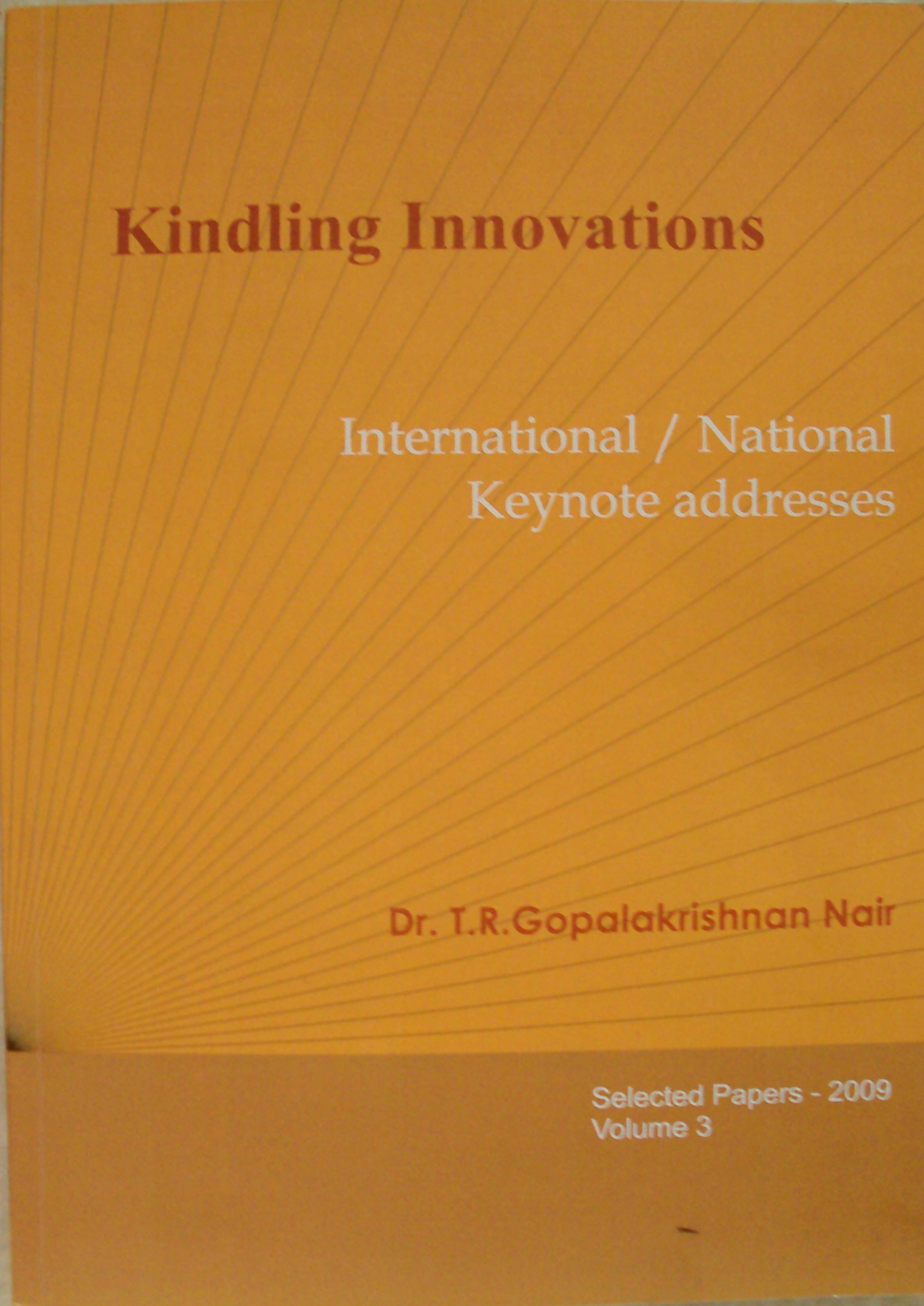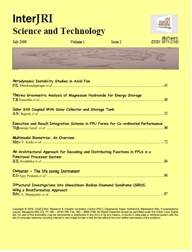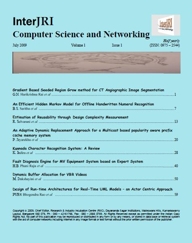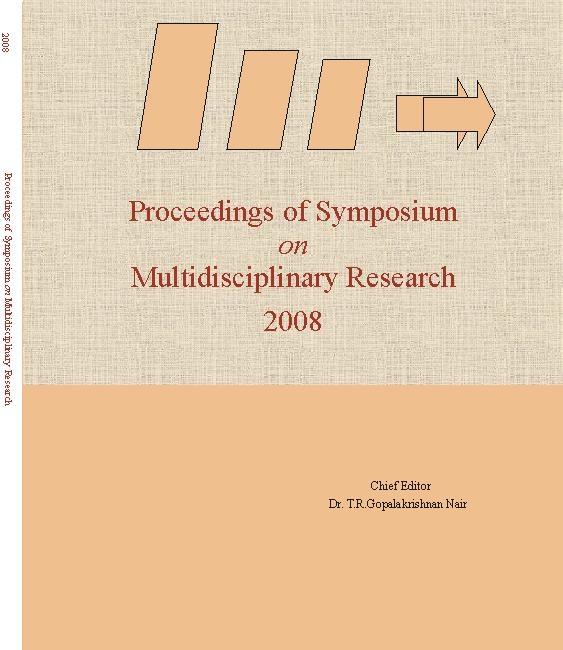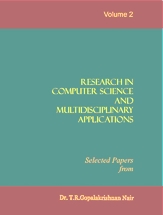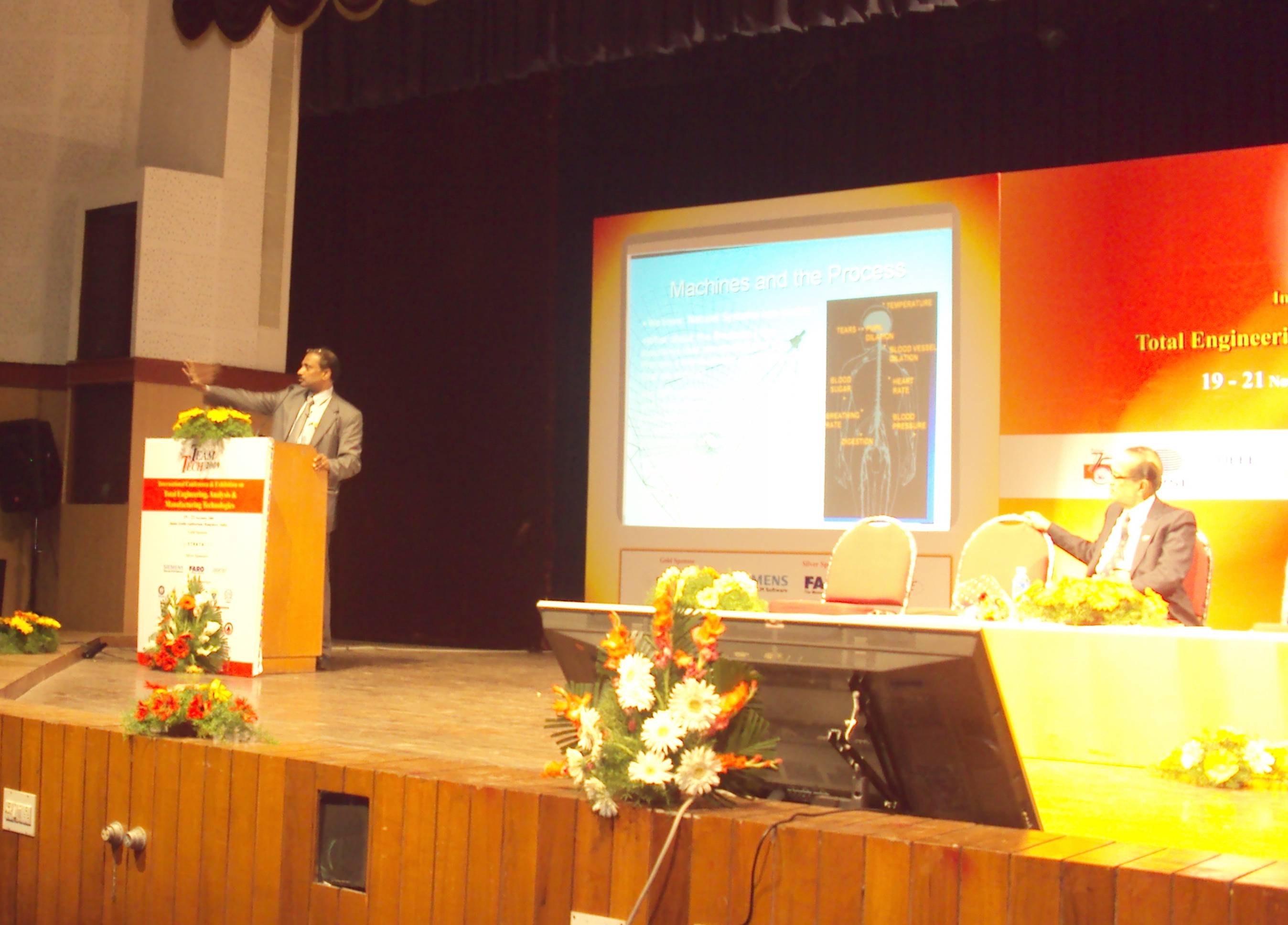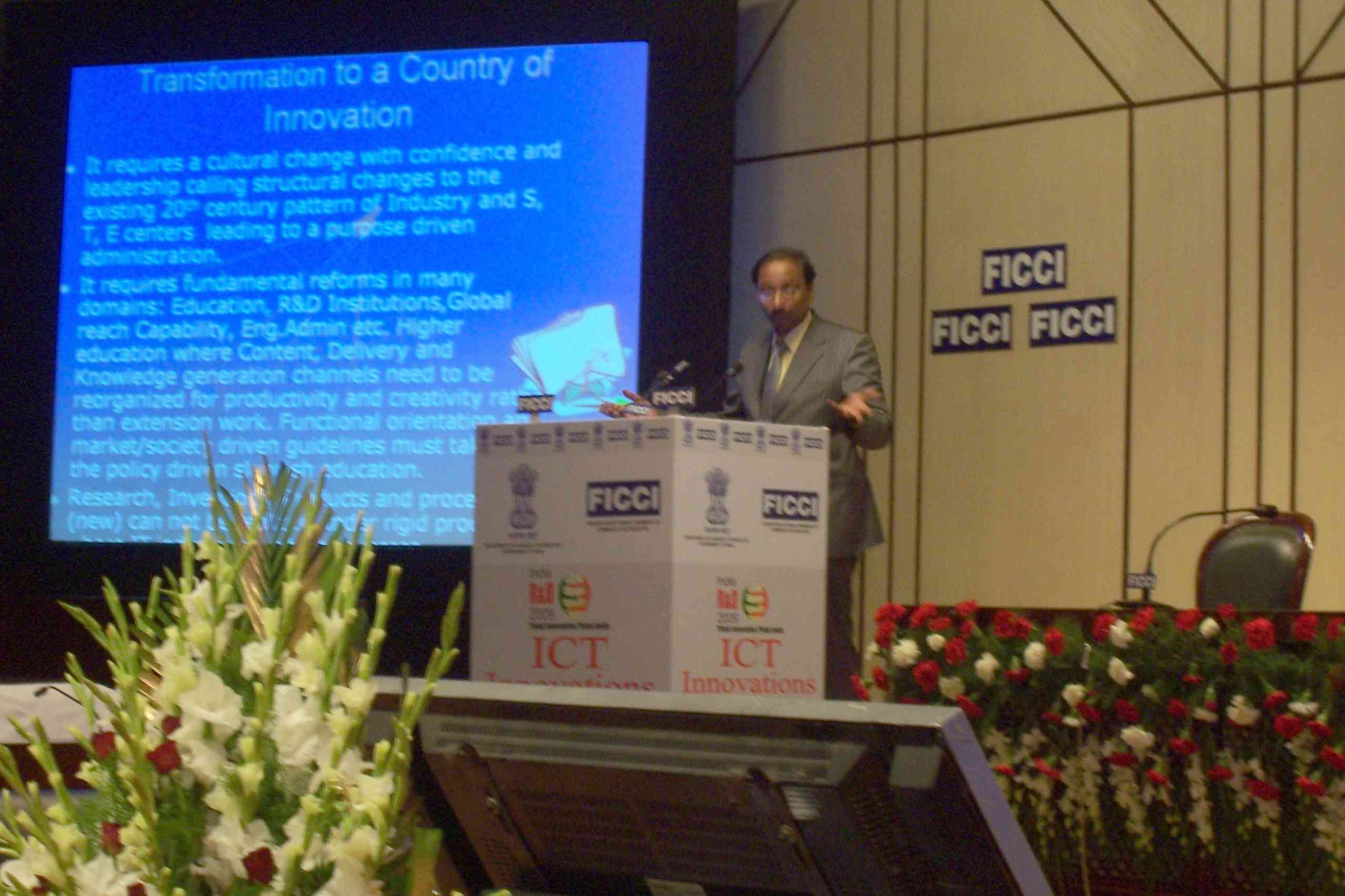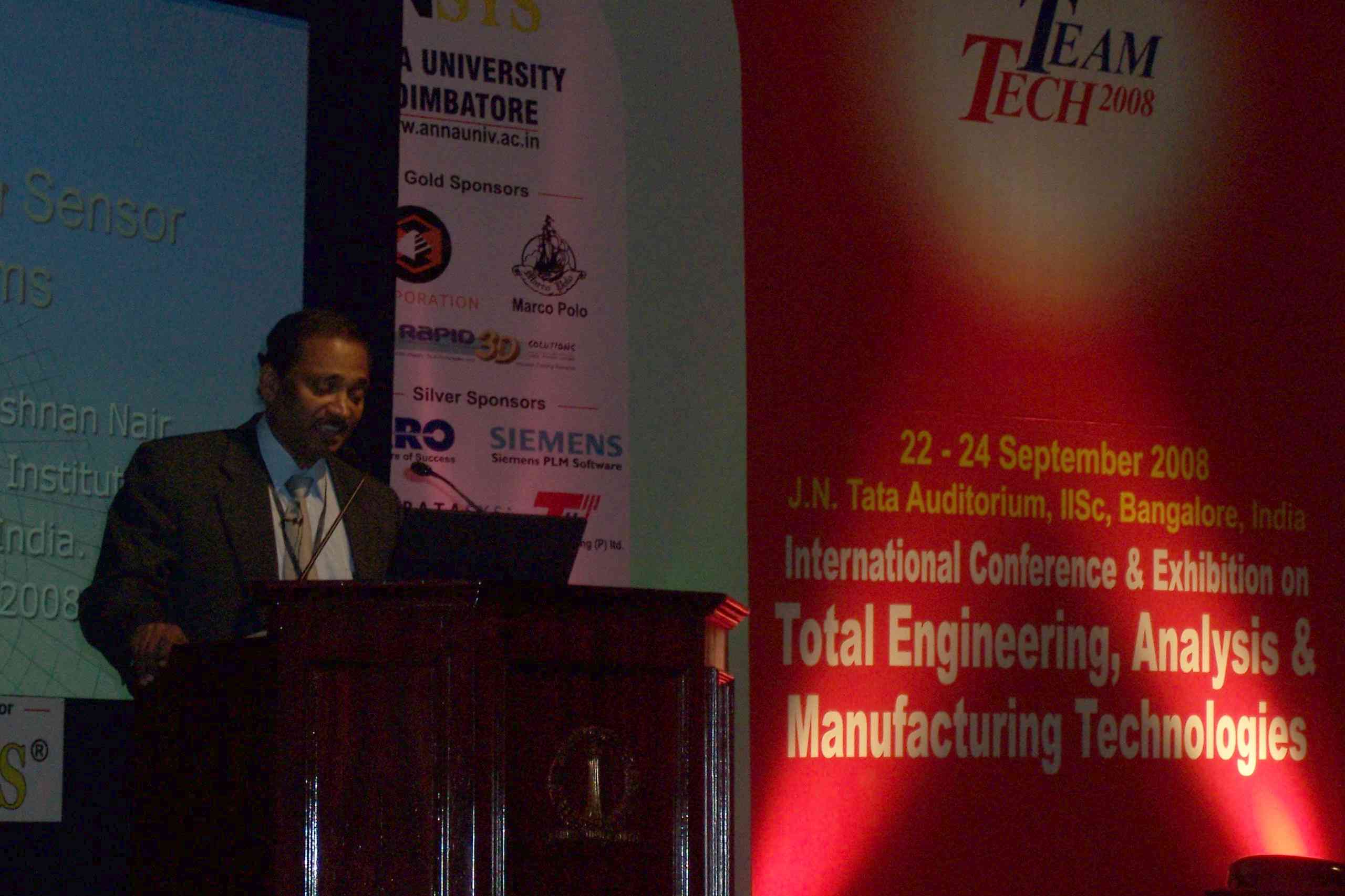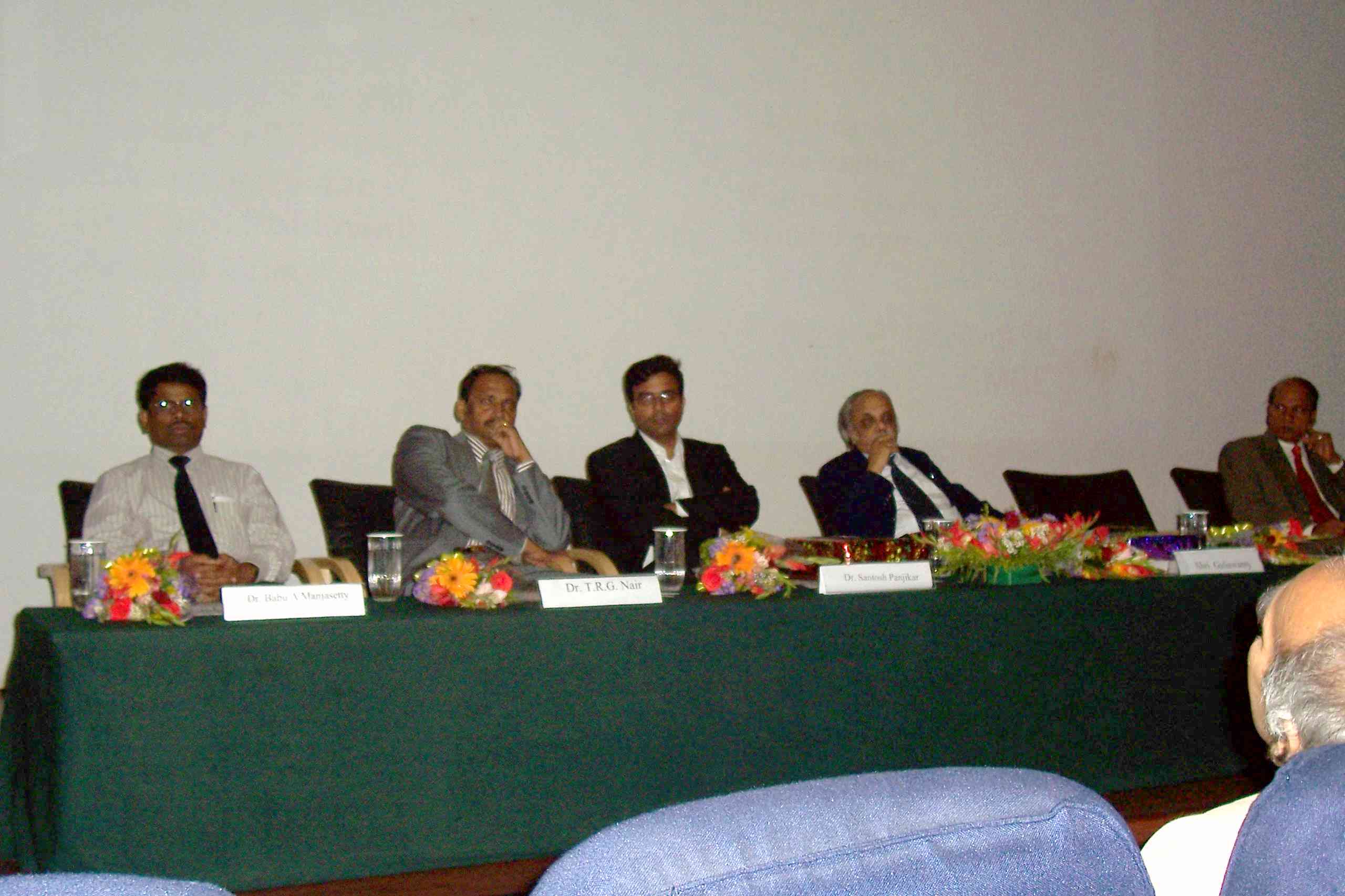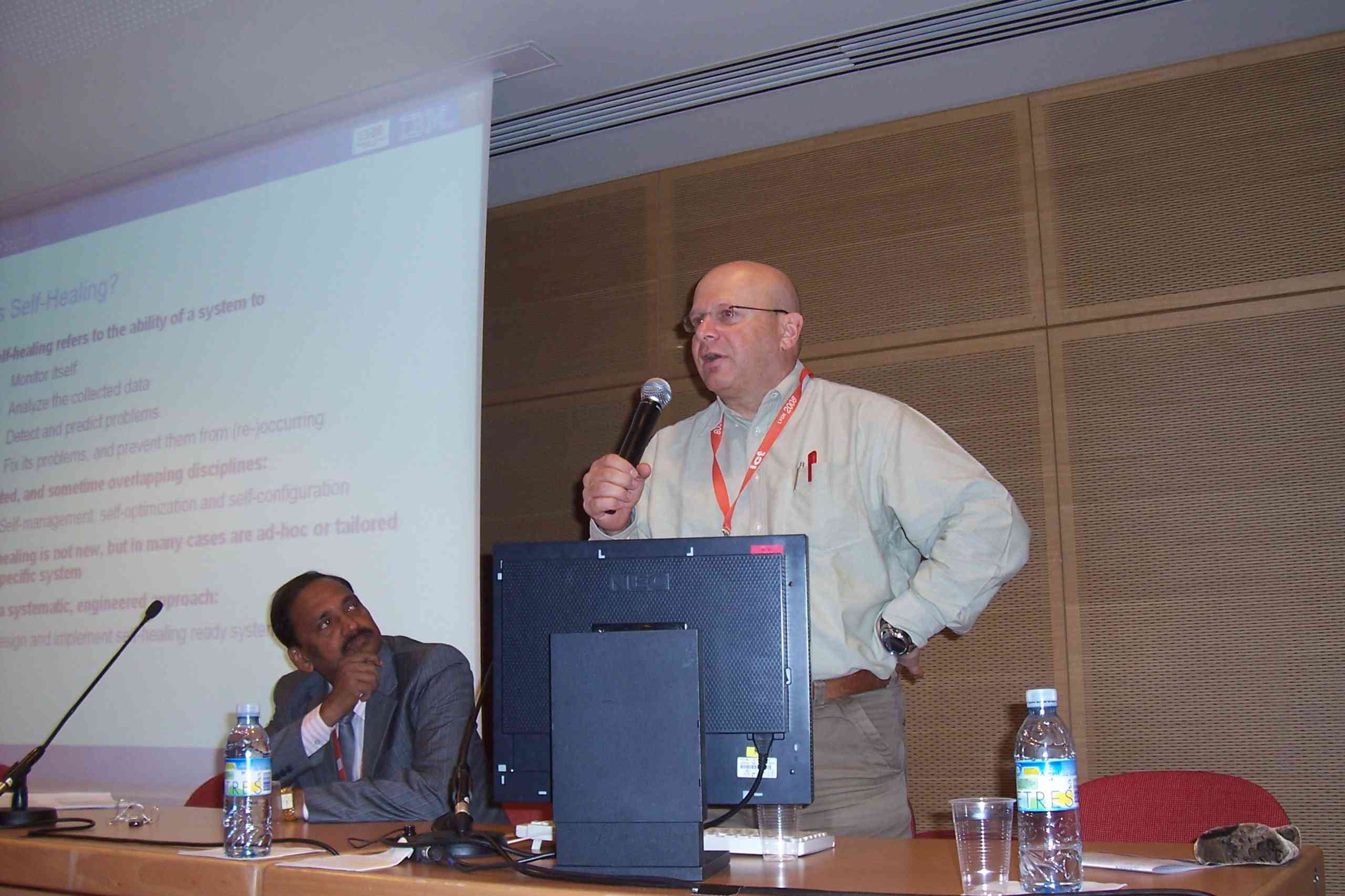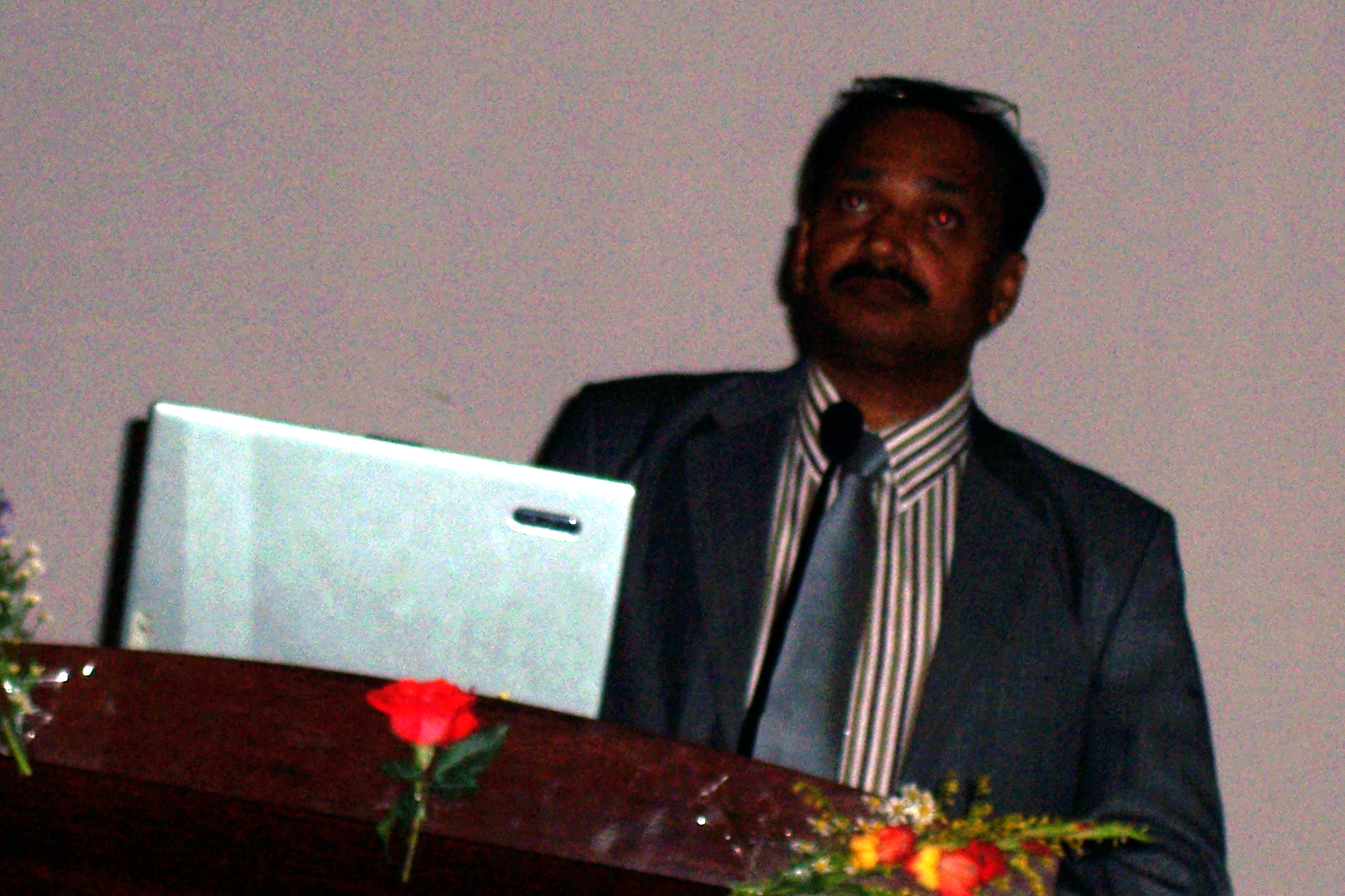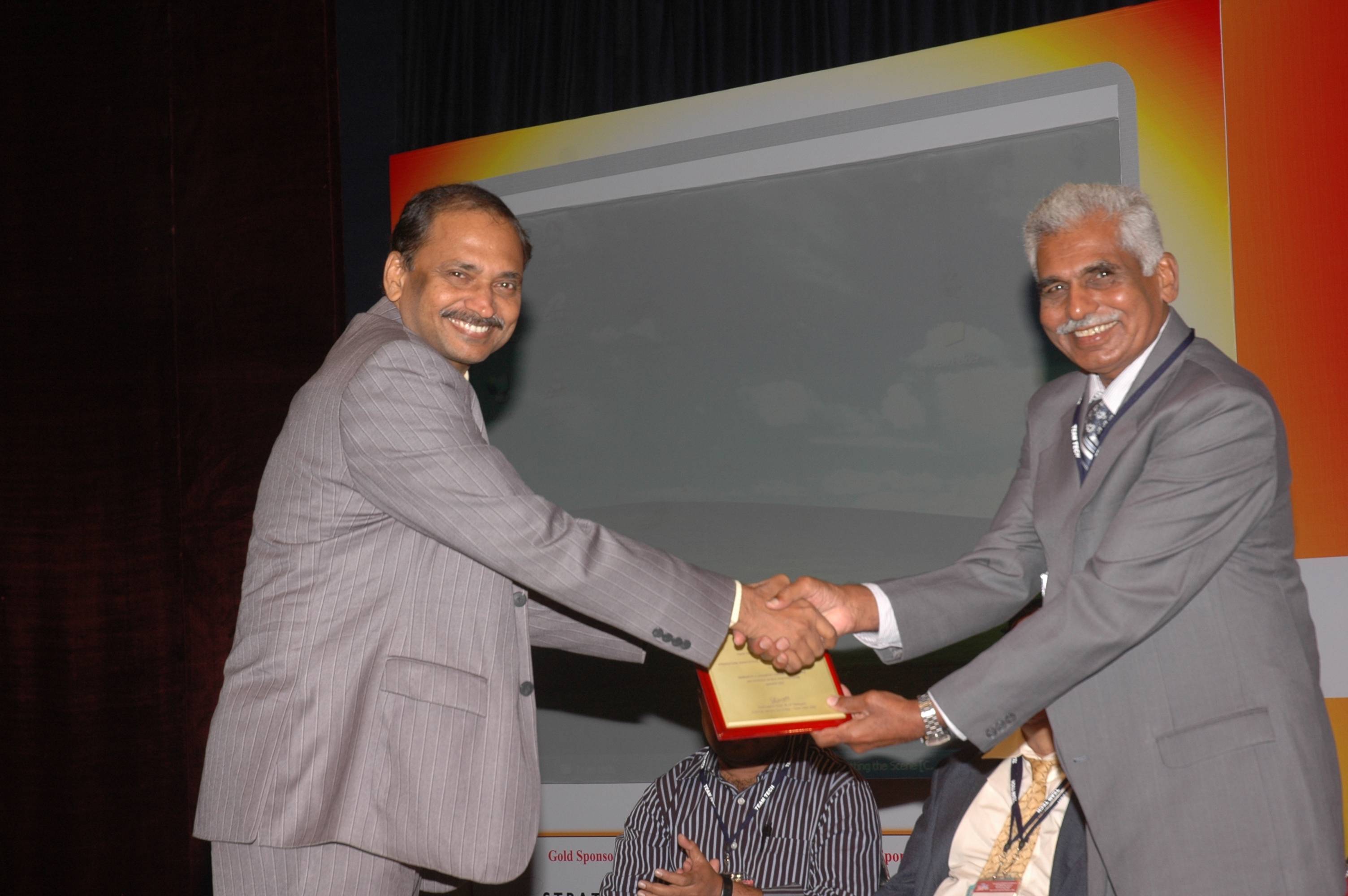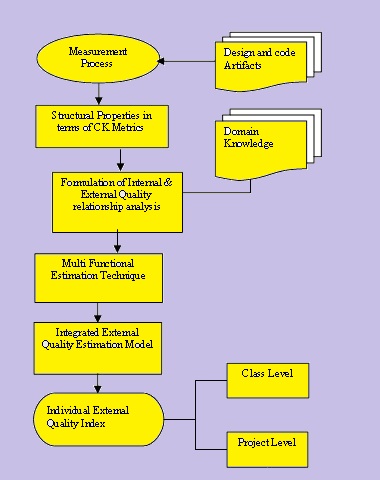|
Research Themes of the Group
- Measurement Engineering: Research in Software-measures applies measurement theory and formal methods to the development of practical software measures at different stages in software process and specification methodologies. It includes
- Formal methods for complex software design quality measurement and prediction.
- Measurement of Depth of Inspection Process.
- Web development effort prediction.
- Weighted Cognitive measurement in different facets of SDLC
- Software Systems: Among the many facets in arriving software systems, SERG focuses on:
- Design patterns and frameworks
- Component Based Design
- Object oriented development
- User interface design
Current Projects
Project: 1
Comprehensive Software Industry Analysis Model - CSIAM
Project Description:
The intention of the project CSIAM is to develop a comprehensive model of the software industry which is a collection of different sub-models interacting and communicating objectively with a cause-effect relationship. It will reflect the current state of the industry and their possible evolution towards the future. The model will not be merely process centric but it will deal with the resources, skills and methods with an entity model, which forms an important factor of comprehensive approach. Process will be treated as an operation transforming the requirements in technical and business domain into a product through a set of active process which works on resource pools using skill factors and cycle periods. The practice of enveloping the tools, resources and the skills with the process as the only accountable entity, for success and failures is discouraged. Process will be an activity performed over the resources with a particular level of skill set transforming the input. In this case, the factors associated with process, technical, business and cross domain are considered in transforming the system specification into the product within the cycle time with an active cost.
This project will be making use of the rationality of the software process model as a structured collection of practices, but it will be treated as an entity to interact with the various other limbs of the industry contributing to the success of a software business operation. The existing models and ideas supporting this aspect will form an integral part of the process unit of this model. It will organize itself in such a way that it will develop a metric system which indicates a set of performance indices of the companies in response to the variation of best practices prevailing in those companies. These metrics on the software companies will distinguish one company from the other though all of them have achieved a stamping of high maturity in the process view in conventional methods and exhibiting behavior contrasting one to another leading to puzzles and ambiguities for a commercial deal. It presumes a comprehensive metric system of industry that will address the 17%-24% probabilities of failure of software project existing in the field.
Research Focus:
The focus of this project will be on arriving at a comprehensive model which will have sub-models integrated through communicating links, threading all the models together. The final model will be able to accept a spectrum of input from the industry, ranging from finances, human resources, business practices and technology and software production process and come out with metrics correlated to the observables of that particular industry. Then, a learning algorithm can be employed for predicting the industry performance which in turn will be the basis of interaction between the client and the vendor. The research project will produce a comprehensive tool which will basically be an amalgamation of business process models and software engineering models. It will serve as a yardstick to assess the performance of various software companies as well as a guiding policy which will provide them with the right direction to achieve favorable results. The model will integrate and derive industry comprehensive metrics effectively applicable for effective evolution and comparison of software companies and thus aid a multi billion dollar outsourcing industry to have a better perspective on their best practices.
Objectives and Goals:
CSIAM will be a comprehensive model which will quantitatively analyze and support the software production process. It will incorporate the analysis of Process Domain, Technological Domain, Risk Domain, Business and various other aspects. This model shown in the figure is expected to bring about the following changes in the software industry.
- The industry will have a comprehensive index to rate the various software companies with fewer ambiguities. The quality of the products, client interaction and the growth rate of the companies will be reflected in by this comprehensive index. This in turn will allow the customers of various software companies to compare and scrutinize the companies as per their requirement.
- This model will ensure more transparency between the customers and the companies. Right from the requirement of the customer to the terms and conditions of the contract will be quantitatively analyzed and framed.
- This model will also facilitate discussions among different stakeholders in the business, allowing them to agree on the key fundamentals and to work towards common goals. It will thus facilitate enhanced interaction between various modules of a business.
- This model will integrate and derive Standardized metrics for the business process in conjunction with the software development process.
|
Comprehensive Industry Analysis Model |
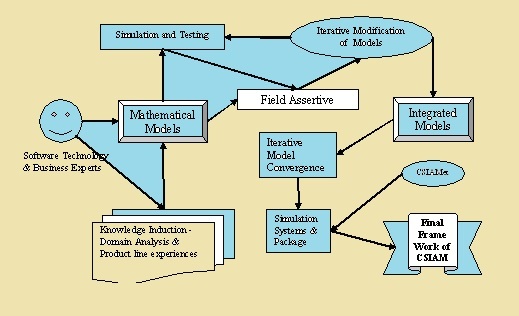
Status & Time-Frame:
Comprehensive Software Industry Analysis Model (CSIAM): Properly pruned and molded CSIAM emerges at this stage. It requires combined effect from the partners and the funding agencies to position the product highlighting the technological business to the world of software engineering and a multi-billion dollar software industry. In order to establish the protocol, processing and procedures coming out of this CSIAM all out effort is required from the sponsors and the industry leaders. The ethics and practices of CSIAM can be institutionalized through a consortium of Business Moderators, Industry Organizations, professional bodies and governmental arms for trade practice.
This research involves complete transformation of the existing software industry measurement system. It involves several work packages like Formation of Preliminary Mathematical Models, Simulation and Testing, Practical Field testing in globally selected companies, Iterative Modification of Models, Framing Integrated Models, Comprehensive Software Industry Analysis Metrics (CSIAMet), Application of Iterative Model Convergence Methods and future simulation system and packaging. The first two stages of research have been completed and the third work package has been initiated. The evolved research methods are published as chapters in a Software engineering Research hand book by US publishers. This model can be converted into a management metric estimation tool. The tool will help the industries to improve their processes pertaining to each and every domain and consequently improve the quality of their product. This tool will dynamically rate the industries using comprehensive industry metrics and thus provide valuable input to a client for selecting a vendor.
Project: 2
An External Quality Metrics Suite for the Estimation of Reusability,
Maintainability and Defect proneness in Software Production
Project Description:
The domain of software engineering is facing multidimensional challenges due to increased volume of software generation demand and rapidly transforming technologies in the hardware and the process domain. This makes a clarion call for inventions and methods which can enable a more reusable, reliable, easily maintainable and high quality defect free software system with deeper control on software generation process. Software quality control at design stage is a promising approach for generating cost effective and high quality product. Estimation of external quality attributes of object-oriented software at an early stage based on the impact of internal structural properties of object oriented paradigm was remaining as a challenge for a long time. This invention is to address these issues and we developed two novel models based on internal design structural property analysis. This provides accurate estimation of external quality factors using design metric data of software measured either at design diagram level or at the level of code artifacts of object oriented software. Our models are automatic, objective, flexible and dynamic.
Research Focus:
This novel methodology provides an accurate estimation on the desirable external quality factors such as reusability; maintainability and defect proneness of object oriented software system. This is done at the design level based on a linear combination of weighted multi functional estimation equations involving metrics parameters and real-world studies. These predictions are based on the structural property analysis of multiple parameters which have intricate relationships identified through previous domain knowledge, experience and intuition. It provides Integrated Estimation Models for Prediction of object oriented software’s external quality factors using metrics governing the design architecture to the industry for effective quality measurement. This model is automatic, objective, flexible, and dynamic. It overcomes the difficulty faced in assessing and controlling the design quality of the system. This work focuses on implementing the idea of relationship between the existing design measures such as coupling, inheritance, cohesion; message passing; class complexity in terms of CK metrics and the external quality factors of object oriented system. Through these models the desired derivable properties such as reusability, maintainability and defect-proneness are estimated.
Objectives and Goals:
This project first introduces a reasoning methodology based on internal structural property analysis of object oriented paradigm. We applied the methodology to estimate the external quality parameters such as Reusability, Defect-proneness and Maintainability index of object oriented software. It consists of a deep analysis of structural properties based on domain knowledge, experience and our intuition. These individual models have been arrived at choosing the predictors as CK Metrics. These predictors describing the classes of sampled projects are the input to the individual models based on a linear combination of Multi Functional estimation involving metrics parameters and real-world studies to compute reusability index, Defect-proneness and Maintainability Index at design stage of the software development life cycle.
Status and Time frame:
The project proposal is submitted under the Doctoral program. This work is being conducted in RIIC, Bangalore.
Project 3
Enhanced Defect Management
Members:
|
1. Dr. R. Selvarani
|
Dean – Research Professor- Computer Science (Modeling, Prediction, Metrics and Analysis) Head, Software Engineering Research Group Research and Industry Incubation Centre Dayananda Sagar Institutions, Bangalore
|
|
2. Prof. Suma V
|
Member RIIC (Defect Management, Process Analysis, and Models)
|
|
3. Dr. T.R.G. Nair
|
Director – Research and Industry Research and Industry Incubation Centre Dayananda Sagar Institutions, Bangalore
|
Patents
- “Comprehensive Software Industry Analysis Model”, Patent filed in first half of 2008. Copyright Lr. Ref: IPR/4.20.13/08038/2008.
- Inventors
- Dr. T.R.Gopalakrishnan Nair, Director-RIIC
- Dr. R. Selvarani, Research Professor-RIIC
- “An External Quality Metrics Suit for the Estimation of Reusability, Maintainability and Defect proneness in Software Production”, submitted to NRDC, March 2009.
- Inventors
- Dr. T.R.Gopalakrishnan Nair, Director-RIIC
- Dr. R. Selvarani, Dean Research -RIIC
|
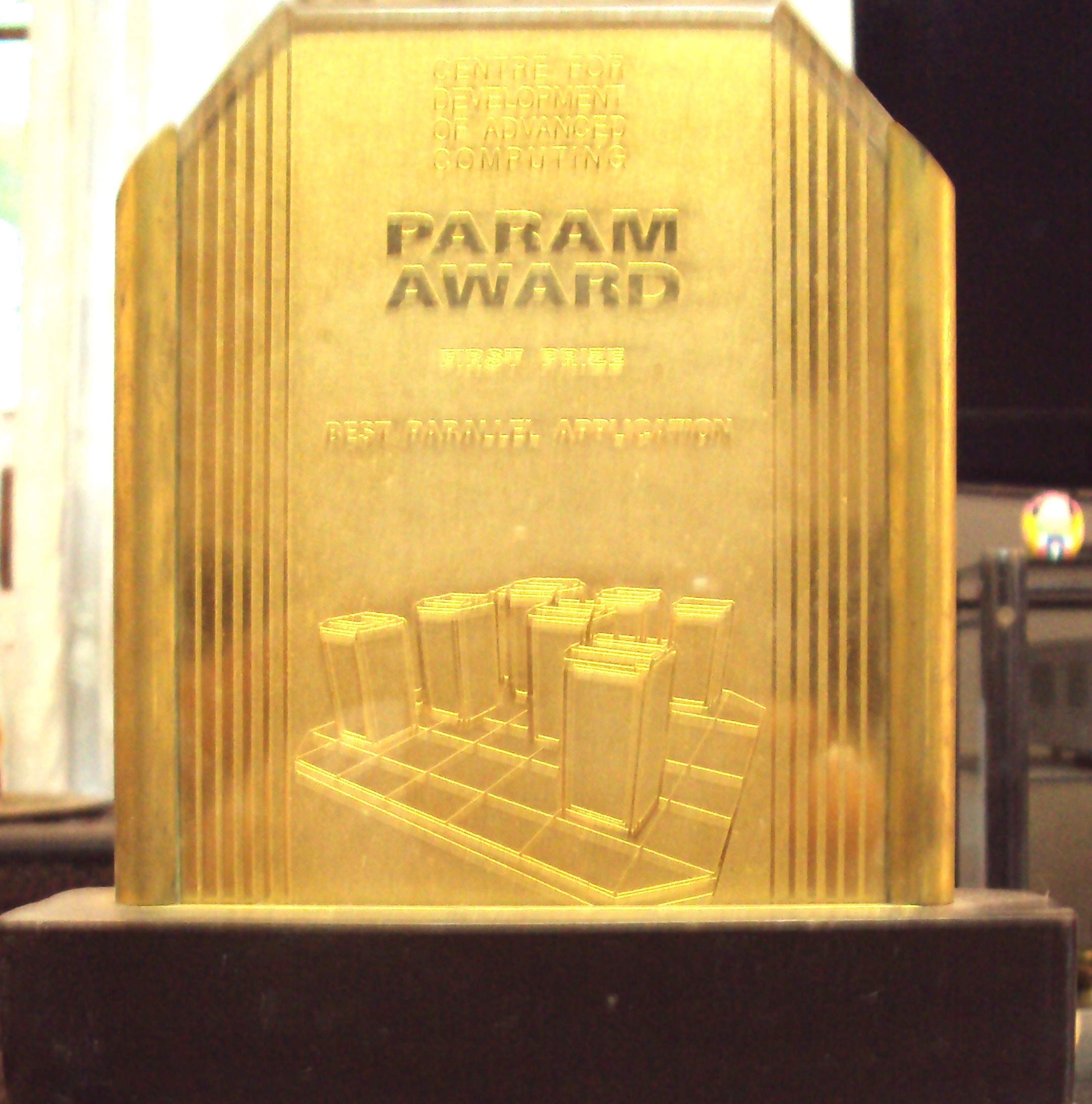
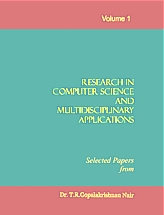
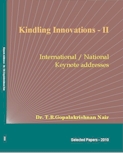
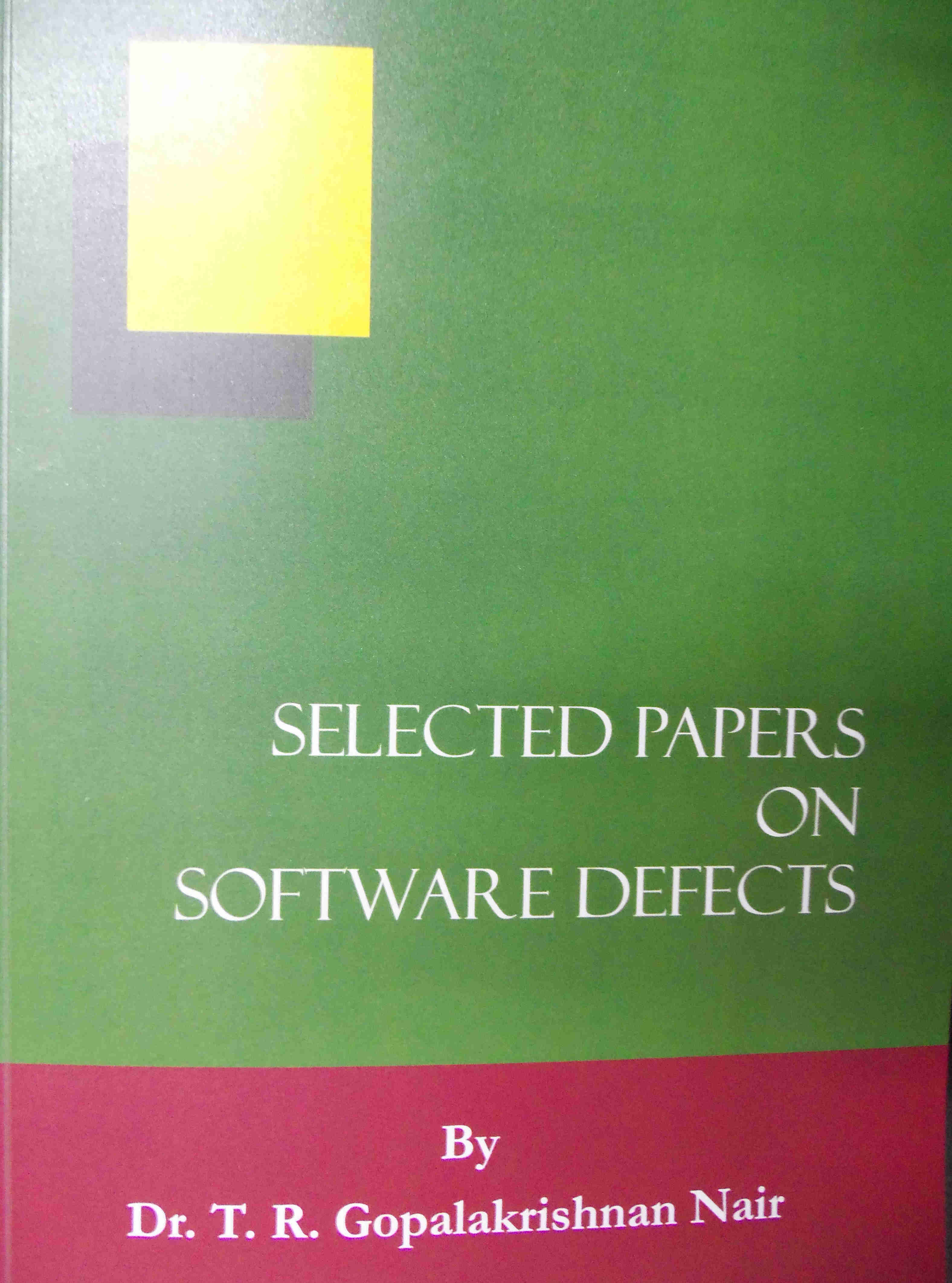 Latest Book
Latest Book